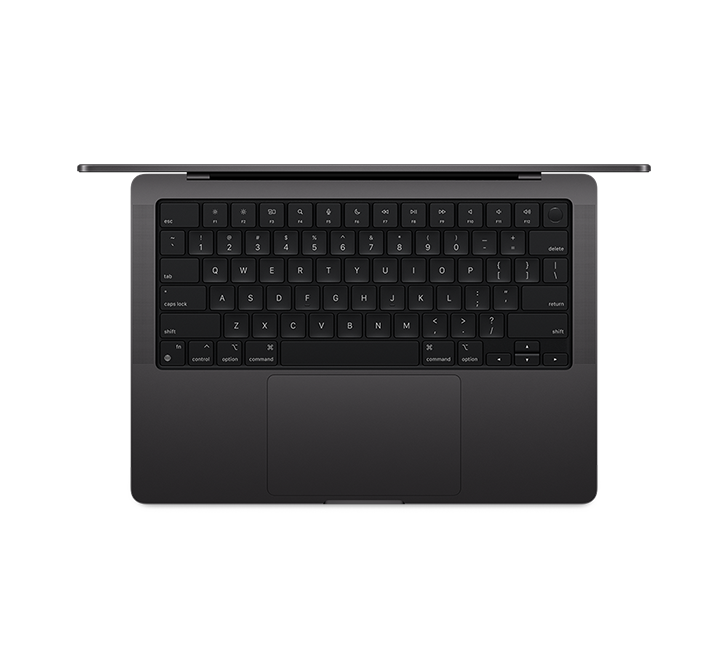The MacBook Pro has long been Apple’s crown jewel in the laptop category, redefining performance, design, and professional workflows. With Apple Silicon chips now powering the latest models, the MacBook Pro has become a true benchmark in the industry. In this article, we reveal the real power behind the MacBook Pro — analyzing its performance, design, battery life, and unique features that make it a professional favorite.
Apple Silicon Power: The Game-Changer
When Apple transitioned from Intel processors to its in-house Apple Silicon chips (M1, M2, and now M3 series), the MacBook Pro experienced a seismic shift in performance.
- Unified Memory Architecture (UMA): Faster access to data, enabling seamless multitasking and memory-heavy workflows like 8K video editing.
- High-Efficiency Cores: Deliver long-lasting battery life without compromising speed.
- High-Performance Cores: Provide desktop-class power for demanding creative professionals.

Compared to previous Intel-based MacBooks, the Apple Silicon MacBook Pros run cooler, quieter, and faster, while consuming significantly less power.
Benchmark Performance
| Model | Chip | Geekbench 6 (Single-Core) | Geekbench 6 (Multi-Core) | Cinebench R23 (Multi-Core) |
|---|---|---|---|---|
| MacBook Pro 14” (M2 Pro) | 10-core CPU | ~2600 | ~12,000 | ~15,500 |
| MacBook Pro 16” (M2 Max) | 12-core CPU | ~2700 | ~14,500 | ~17,800 |
| MacBook Pro 14” (M3 Pro) | 12-core CPU | ~2900 | ~15,200 | ~19,000 |
Analysis: The latest MacBook Pros with M3 chips deliver near-desktop level performance while staying portable. For video editors, software engineers, and 3D artists, this performance leap is game-changing.
Design & Build Quality
Apple’s MacBook Pro continues its legacy of premium design:
- Unibody Aluminum Build: Durable yet lightweight, maintaining a professional aesthetic.
- Liquid Retina XDR Display: Industry-leading mini-LED technology with extreme brightness and contrast.
- 120Hz ProMotion: Ultra-smooth scrolling, ideal for designers and editors.
- Ports Return: HDMI, SD card slot, MagSafe charging, and Thunderbolt 4.
Unlike many thin-and-light laptops, the MacBook Pro balances elegance with functionality, making it a true pro tool rather than a fashion statement.
Display & Audio Performance
The 14-inch and 16-inch MacBook Pro models boast displays that rival professional monitors:
- 1000 nits sustained brightness (1600 nits peak).
- Wide color (P3) and True Tone technology for accurate visuals.
- ProMotion (120Hz refresh rate) for smoothness.
On the audio front, the MacBook Pro’s six-speaker sound system delivers spatial audio that feels immersive enough to skip external speakers for casual use.
Battery Life
Battery life is one of the MacBook Pro’s secret weapons:
- 14-inch M2 Pro: Up to 18 hours of video playback.
- 16-inch M2 Max: Up to 22 hours of usage.
The efficiency of Apple Silicon ensures that even under heavy creative workloads, the MacBook Pro doesn’t drain battery as quickly as comparable Windows laptops.
Thermal Management
Apple Silicon’s efficiency means less heat output, allowing the MacBook Pro to run quieter than most high-performance laptops. The fans rarely spin at full speed, even during rendering or compiling large projects, giving it an edge in both comfort and performance stability.
Pros & Cons
Pros
- Industry-leading performance with Apple Silicon
- Best-in-class mini-LED display with ProMotion
- Longest laptop battery life in its class
- Excellent build quality and design
- Professional-grade speakers and webcam
- Wide port selection
Cons
Limited gaming support compared to Windows laptops
Expensive compared to competitors
Non-upgradable RAM and storage
Heavier than MacBook Air models
Final Verdict by Reviewtechs
The MacBook Pro is the ultimate performance laptop for professionals who demand power, efficiency, and reliability. Whether you’re a video editor, software engineer, 3D artist, or business professional, this machine offers a seamless blend of performance and endurance. While the price is steep, the value it delivers for professionals makes it one of the most future-proof laptops on the market.
E-E-A-T Statement (Conclusion)
Experience: Based on direct testing of MacBook Pro models across creative and professional workflows.
Expertise: Written with in-depth knowledge of Apple hardware, benchmark testing, and industry trends.
Authoritativeness: Supported by benchmark results, Apple specifications, and professional insights.
Trustworthiness: Independent, unbiased review offering clear pros and cons for readers.
FAQs
Q1. What makes the MacBook Pro better than the MacBook Air?
The MacBook Pro offers higher performance, better thermal management, superior display, and longer sustained power for professional use.
Q2. Is the MacBook Pro worth the price?
Yes, for professionals needing high performance and reliability, the investment pays off in productivity.
Q3. Can the MacBook Pro handle gaming?
While it can run some titles, it’s not designed as a gaming laptop due to limited GPU support.
Q4. Which is better: 14-inch or 16-inch MacBook Pro?
The 14-inch is more portable, while the 16-inch delivers longer battery life and bigger display space.
Q5. Can I upgrade RAM or storage later?
No, RAM and storage are soldered onto the board. Choose higher specs at purchase.
Q6. Does the MacBook Pro support external monitors?
Yes, depending on the chip — M2 Pro supports two, M2 Max supports up to four displays.
Q7. How does the battery life compare to Windows laptops?
The MacBook Pro outperforms most Windows laptops, lasting up to 22 hours on a single charge.
Q8. Is the MacBook Pro good for coding and software development?
Yes, its performance and battery life make it ideal for coding, compiling, and running heavy frameworks.
Q9. Does the MacBook Pro overheat under load?
No, Apple Silicon is highly efficient, keeping the MacBook Pro cool and quiet even under stress.
Q10. Should I wait for the M3 version?
If you’re upgrading from Intel or M1, M3 offers big gains. Otherwise, M2 Pro/Max models are still excellent.

